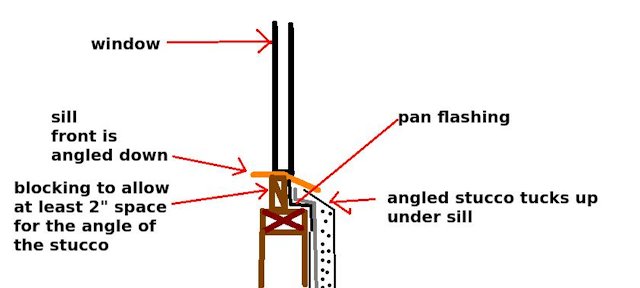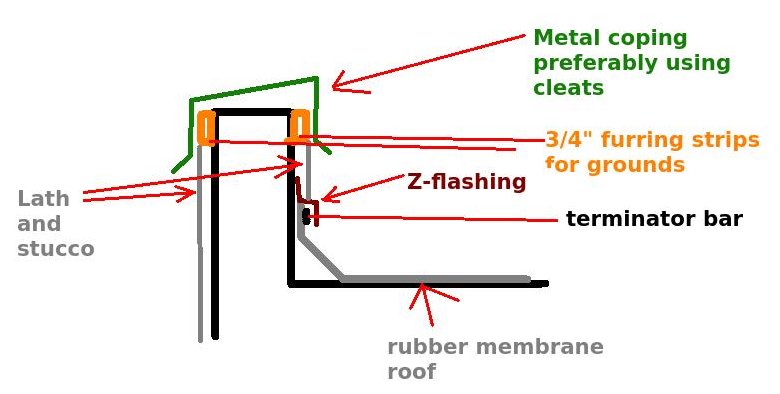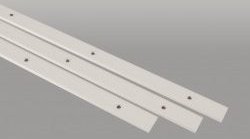Details for windows, sills and parapet walls.

A space is left below the sill to allow horizontal stucco to tuck underneath.
Failure to leave this gap is an invitation for rot and failure.
Stucco isn't the most reliable material to use on horizontal surfaces like window sills. We have torn off stucco failure due to rot when the stucco is brought up to the window. Water soaks through and rots the bottom of the window and framing supporting the window.
An example of why to leave the gap. Leaving the gap allows room for an angle.
No, we don't set windows, but the use of a pan flashing, even a simple peel and stick rubber, is crucial to prevent window rot. Most window manufacturers include the use of plan flashings in their window installation guidelines, which are frequently ignored.
Not following a manufacturer's recommendations is defective building.
Termination Bar for parapet walls

A termination bar is a very stiff piece of metal that secures the edge of rubber membrane roofing to the building using bolts or anchors.
We don't do the roofing or the windows, either, so all I can do sometimes is make suggestions. On one of our projects, (I am not going to tell you where) The edge of the roof was secured using duct straps-WRONG. We have seen these Termination bars, also known as T-Bars, put on using roofing nails-ALSO WRONG.
Manufacturers of roofing also have their recommendations, and will guarantee their product if Termination bars are put on correctly.
A Z-shaped flashing covering the edge of the roof to me is important for stucco, particulary on block walls, where water can be absorbed into the block and run down behind the roofing.
A view of termination bars I copied
The reason for the big pictures is I jumped on the mobile friendly band wagon some time ago.
Here is more of what I wrote about parapet wall and termination bars: question4503.html. Note the scupper is too high not allowing water to drain. Yet another drama in the Naked City.